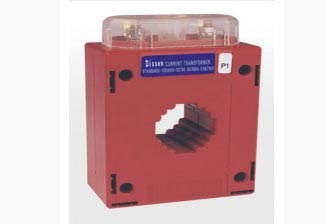
What is the purpose of a current transformer?
Measurement: CTs are primarily used to measure high currents in power systems. By stepping down the current to a manageable level, they allow instruments such as ammeters, wattmeters, and energy meters to accurately measure the current flowing through a conductor.
Protection: CTs are crucial components in protection schemes for electrical equipment and systems. They provide inputs to protective relays, which monitor current levels and act to isolate faulty equipment or circuits in case of overcurrent conditions, such as short circuits or overloads. This helps prevent damage to equipment and ensures the safety of personnel.
Control: In some cases, CTs are used for control purposes, providing feedback signals to control systems that regulate the operation of electrical devices or systems based on current levels.
Metering: CTs are commonly used in metering applications to measure and monitor power consumption in industrial, commercial, and utility settings. By accurately measuring current, CTs enable utilities and consumers to monitor energy usage and allocate costs accordingly.
Overall, current transformers play a crucial role in electrical systems by enabling accurate measurement, protection, and control of electrical currents, contributing to the safe and efficient operation of power systems.
What are the two types of current transformers?
Which current transformer is more accurate?
What are the three current transformers?
What does a current transformer do?
What is difference between CT and PT?
How many types of CT transformers are there?
What is the CT in a switch yard?
What does CT mean on breaker box?
What happens if CT secondary is open?
What is the difference between CT and normal transformer?

